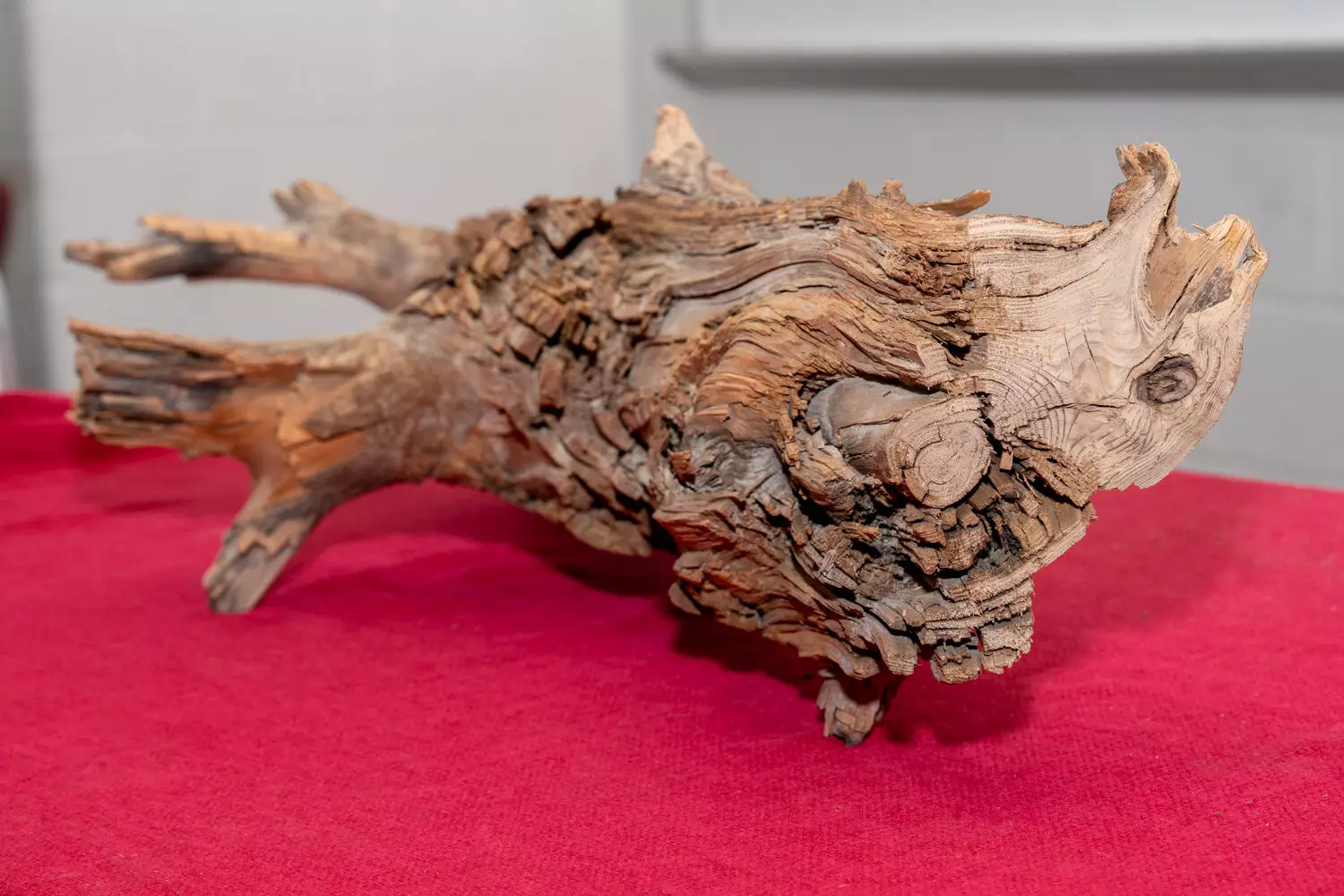A recent study spearheaded by Professor Ning Zeng of the University of Maryland is shedding light on a surprising ally in the fight against climate change—an ancient log that has withstood the test of time for nearly 3,800 years. The research, shared in the journal *Science*, analyzes this log, discovered serendipitously during a wood vaulting project in Quebec, Canada. This study’s revelations not only preserve the legacy of a natural artifact but may also inspire new strategies for carbon sequestration methods in a world increasingly threatened by climate change.
Zeng and his research team stumbled upon the Eastern red cedar log while executing a local pilot project aimed at burying fresh wood to investigate the wood vaulting concept. They unearthed this 3,775-year-old log, located approximately 6.5 feet below the surface. The log’s impressive preservation is remarkable; it retained more than 95% of its original carbon content, indicating that the surrounding environment crucially shielded it from the elements. Zeng’s enthusiasm about this find was evident as he recounted the moment; the log was so well-preserved that it could potentially be reused for furniture making.
The log’s condition serves as a historical testimonial to nature’s ability to protect organic material, a phenomenon that could inspire modern conservation techniques. Understanding the specific environmental elements responsible for such preservation could guide efforts toward capturing carbon and mitigating the effects of climate change.
The concept of wood vaulting is relatively straightforward yet profound. It proposes to repurpose non-commercial wood, often sourced from trees affected by disease, wildfires, or even surplus construction materials, by burying these resources to halt their decomposition. In so doing, the strategy aims to prolong carbon storage, thereby preventing the release of carbon dioxide—a potent greenhouse gas—back into the atmosphere when decay occurs.
Tree planting is often heralded as a key tactic for carbon sequestration, but the process doesn’t end once trees die. In fact, when trees decompose, they contribute significantly to the atmospheric burden of CO2. This understanding has led to a broader inquiry into how wood can be leveraged as a resource for carbon storage, a ghost of functionalities from the ancient past demonstrating potential solutions for present-day dilemmas.
According to Zeng, the true secret behind the log’s preservation lies in the unique properties of the clay soil in which it was buried. This low-permeability soil limited the flow of oxygen, thus inhibiting the growth of fungi and insects—two primary agents of wood decomposition. Zeng explains how the specific conditions present in this terrain halted the log’s decline over millennia. This discovery holds significant implications not just for this particular case but could serve as a template for similar wood vaulting practices globally.
Incorporating insights from geological and archaeological studies, the research underscores that previous examinations of ancient wood often neglected the surrounding environmental conditions that contributed to their longevity. By honing in on those critical factors, Zeng’s team aims to optimize wood vaulting applications.
Following the log’s excavation, further scientific analysis was undertaken, including carbon dating, to definitively establish its age. Collaborations with experts from UMD’s Department of Materials Science and Engineering provided additional insights, allowing researchers to explore the microscopic structure, chemical makeup, mechanical strength, and density of both the ancient and freshly cut samples of Eastern red cedar. The comparisons yielded compelling evidence that the older log had retained an impressive volume of carbon—a crucial finding that reinforces the benefits of such environmental conditions.
The clay soil’s inherent characteristics suggest that wood vaulting may indeed serve as a viable solution against climate change, particularly as a supplemental strategy to broader initiatives focused on reducing overall greenhouse gas emissions.
With the mounting urgency of climate challenges, these findings by Zeng and his fellow researchers pave the way for innovative climate solutions. Despite the simplicity of burying wood, the study emphasizes the need for detailed attention to the environmental conditions that favor long-term preservation. As research continues, the hope is to refine techniques around wood vaulting and explore its applications globally.
Zeng’s excitement hints at the potential of their findings to contribute meaningfully to climate strategies. By combining traditional environmental knowledge with scientific innovation, we may move closer to effective solutions for our planet’s future. As we look to ancient methods for modern solutions, the old log stands as a testament to nature’s wisdom, providing lessons for generations to come.


Leave a Reply